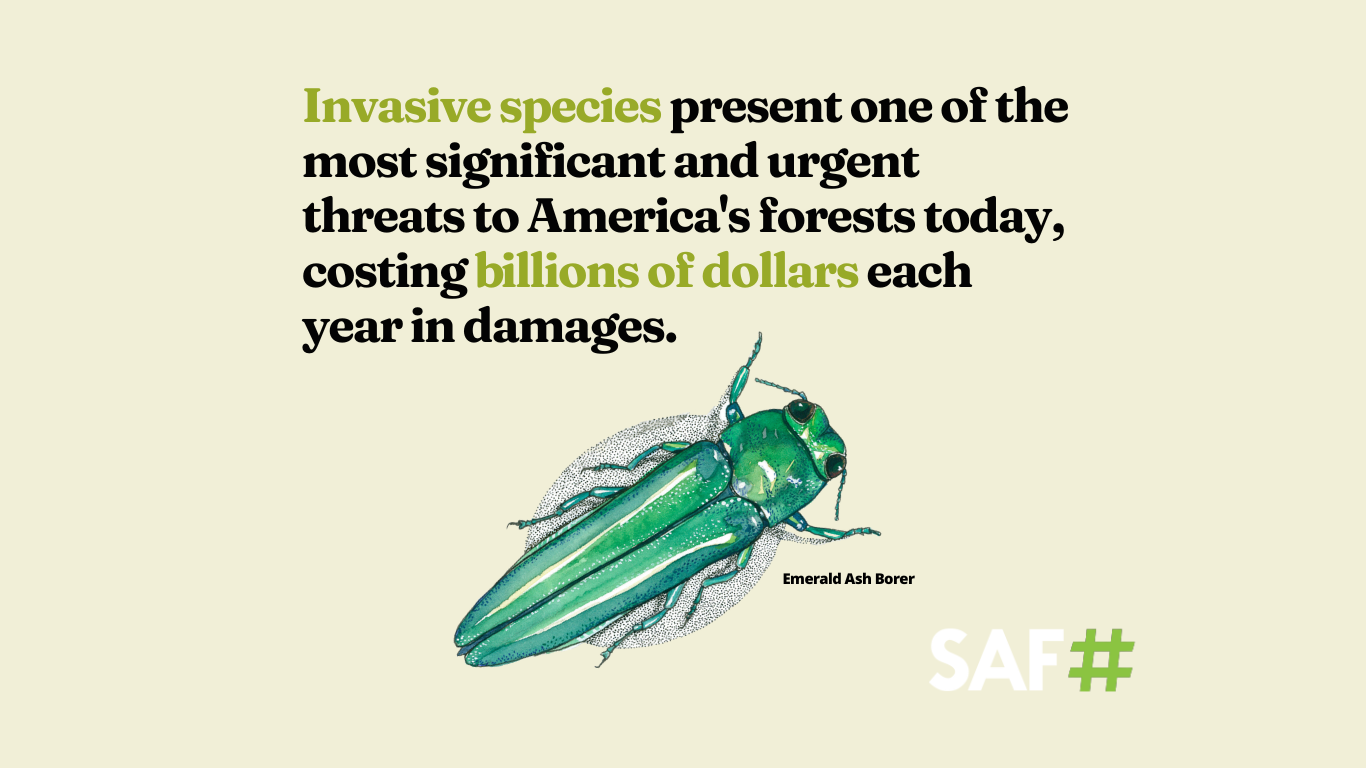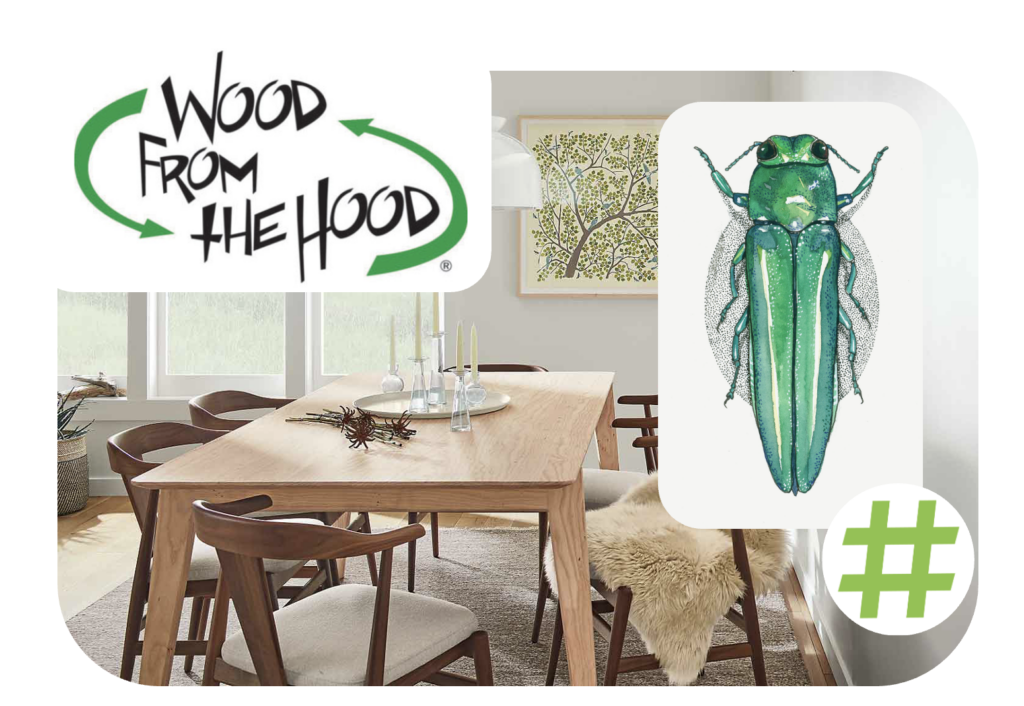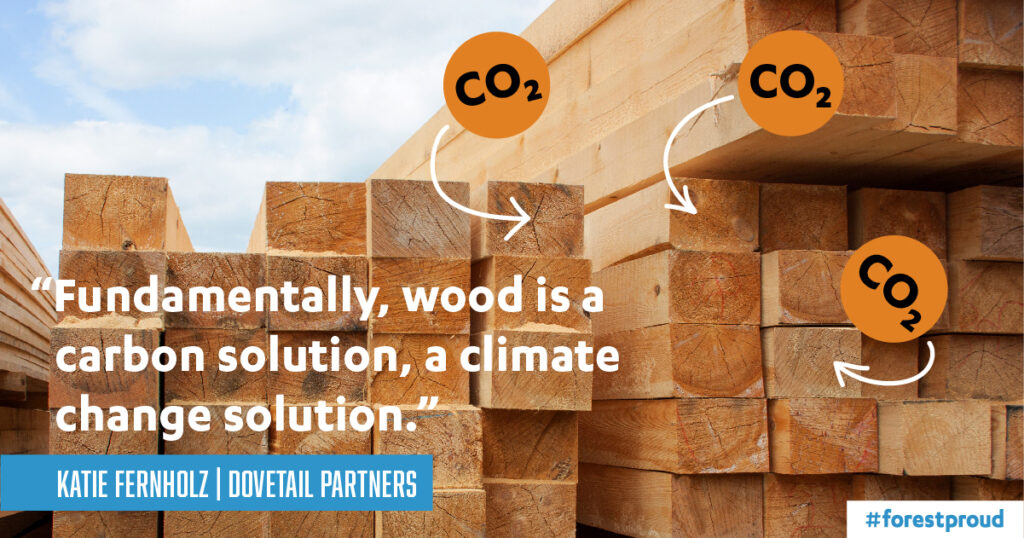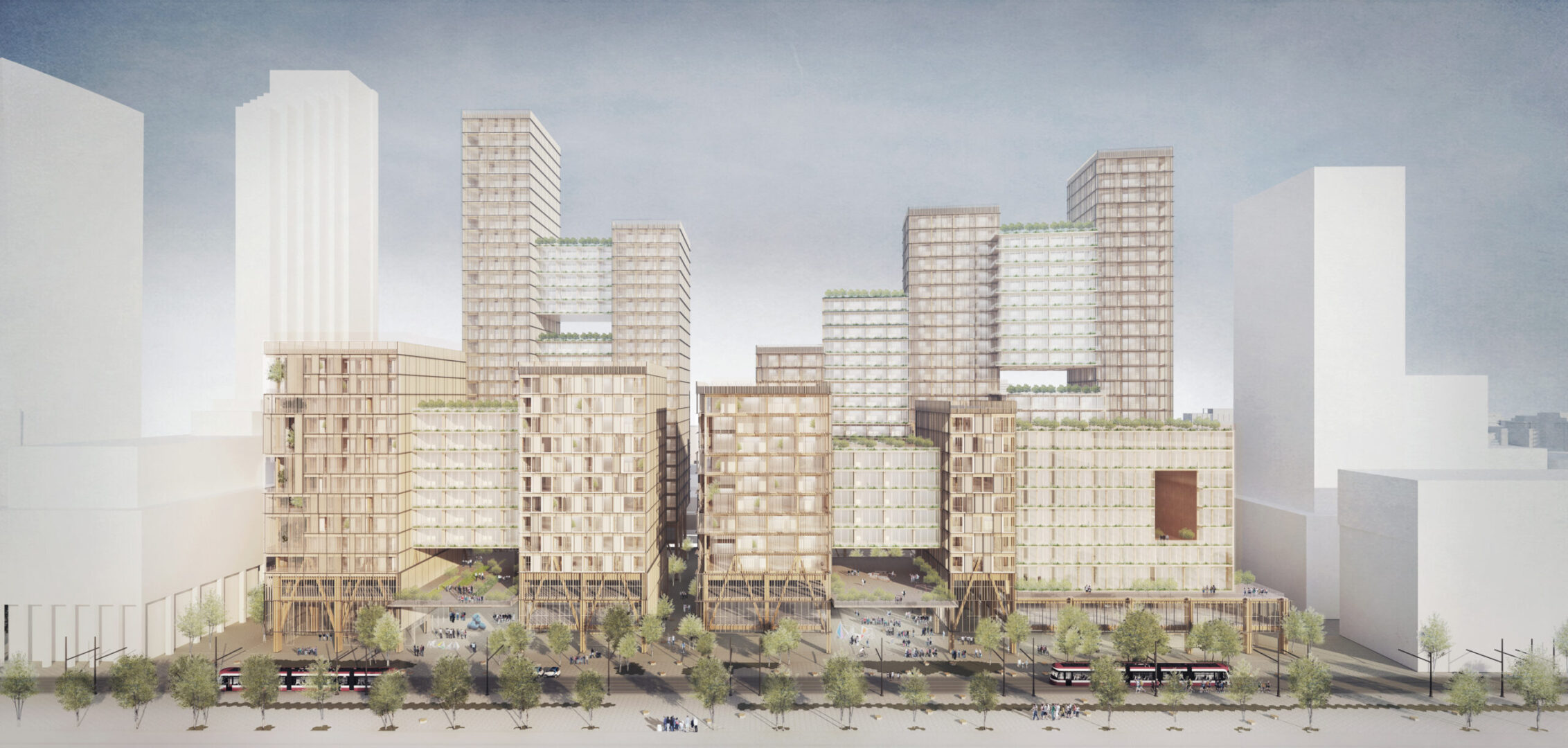Invasive Species: from infestation to inspiration
Managing for forest health and invasive species. Crafting opportunities.

We spend a lot of time talking about climate change and forests, so we’re naturally talking about tree heath, forest pests, diseases, and invasive species regularly. Why? Climate change has made the threat of invasive species worse, with warming temperatures allowing species to move into areas that may have been too cold to survive.
Our #forestproud friends over at Project Learning Tree define an invasive species as “any kind of organism that is not native to an ecosystem and causes harm to the environment, economy and possibly even human health. Typically, the species grow, reproduce quickly, and spread aggressively because their populations are not controlled by natural predators.” As invasive species threaten forest health and resiliency, the changing temperatures also stress trees out, making them vulnerable to infection or infestations (just like how our immune systems are more vulnerable when we’re stressed or burned out!).
Invasive species are one of the biggest threats facing forests across the US in both urban and rural settings, costing billions of dollars each year in economic and environmental damages. The Society of American Foresters and the forest sector as a whole are committed to science-based, proactive, and adaptive approaches to the prevention, management, and control of invasive species in forests at scale, including the sustainable restoration of forests impacted by these species.
While managing for the impact of invasive species in our forests is a huge financial undertaking, we can apply a #forestproud lens and see opportunity and potential to scale solutions - even in the face of massive infestations!

Invasive species like the Emerald Ash Borer have massive landscape implications. Ash trees were once a common site in urban and community centers, planted for their beauty and resiliency. But once the Emerald Ash Borer arrived, that all changed. From infestation, it takes 3-5 years until the infected tree dies. More than 99% of ash trees that have been attacked have been killed (less than 1 in 1,000 survive). That leaves millions of standing dead or dying trees. In urban areas, taking these dead trees out for people’s safety is paramount – but that’s expensive, and creates a massive waste problem in our already-overburdened landfills. Let’s also not forget also that trees store carbon as they grow, so all these dead ash trees mean all those millions of tons of carbon are decaying back into our atmosphere. But there’s an alternative to landfills!
From the ashes, opportunity.
Reclaiming urban ash wood and turning them into works of wooden art transforms these trees into an opportunity to reduce wood waste, create jobs in underserved communities, and store carbon in long-lived wood products, while driving incentives to replant and regrow urban forests. Urban wood reuse can be a complex process to get started, but the upside is worth the work. If you want to learn more, check out #forestproud friends Wood from the Hood, Room & Board, and Taylor Guitars as just three of many urban wood businesses turning trash to treasure.
It’s worth owning that we live in a capitalist society. If we don’t value it, there’s no value in it. Right? Right.
So – as we stated earlier, removing and managing for invasive species is a massive financial undertaking. To offset the costs of management, we have to think creatively and explore the potential to create value. Just as the urban wood movement is reclaiming wood waste from urban areas and turning that into beautiful furniture pieces, interior décor statements, musical instruments and more, we can also build entire buildings from invasive species.
Meet After Architecture founders Katie MacDonald, Assoc. AIA, and Kyle Schumann, who have set their sights on “a byproduct of sustainable forestry and ecological restoration: invasive plants. By developing architectural uses for nonnative species and timber thinnings —specimens that are strategically removed as part of forest management—MacDonald and Schumann believe the building industry can wean off carbon-intensive materials.” We're seeing this successfully play out already.
"In Hawaii, for instance, invasive albizia trees are now sought after as a building material thanks to a recent demonstration from The Albizia Project. Albizia trees were introduced to the Hawaiian Islands in 1917 as a part of reforestation efforts. But the trees soon outcompeted slower-growing native trees and altered the forest’s soil chemistry, further disadvantaging native species. Like Bradford pear trees, albizia are also prone to shedding branches without warning, leading many people to assume that the wood was weak and had little commercial value. Today, demand for albizia wood, once left to rot in the forest or along roadsides, has outstripped supply." Check out this cool article to meet these innovators, explore these projects in more detail, and hear from architects focused on leveraging invasive species as a hot commodity for low-carbon supply chains, from whole trees to mass timber manufacturing.

Approximately 50% of the dry weight of a tree is carbon. Trees sequester carbon from the atmosphere and store it as they grow, making forests important for mitigating climate change. Critically for our planet, carbon can also be stored outside of forests in wood products made from trees that allow us to meet human needs while storing the carbon sequestered by trees in long-lived products. The ability for a building to act as a climate solution is incredibly valuable. Mass timber and lumber locks in and stores carbon in a way many building materials don’t. With the building industry currently responsible for an estimated 20% of global emissions, a renewed focus on and enthusiasm for building with wood is a climate game changer.
As a society, we are increasingly focused on the carbon and sustainability story associated with the buildings we build and the products we buy. Adding invasive species into the building and décor spaces means we can build and decorate our future homes and offices with wood products in a way that keeps carbon locked up and our forests healthier, resilient, and better able to adapt to a changing climate. That’s #forestproud.

